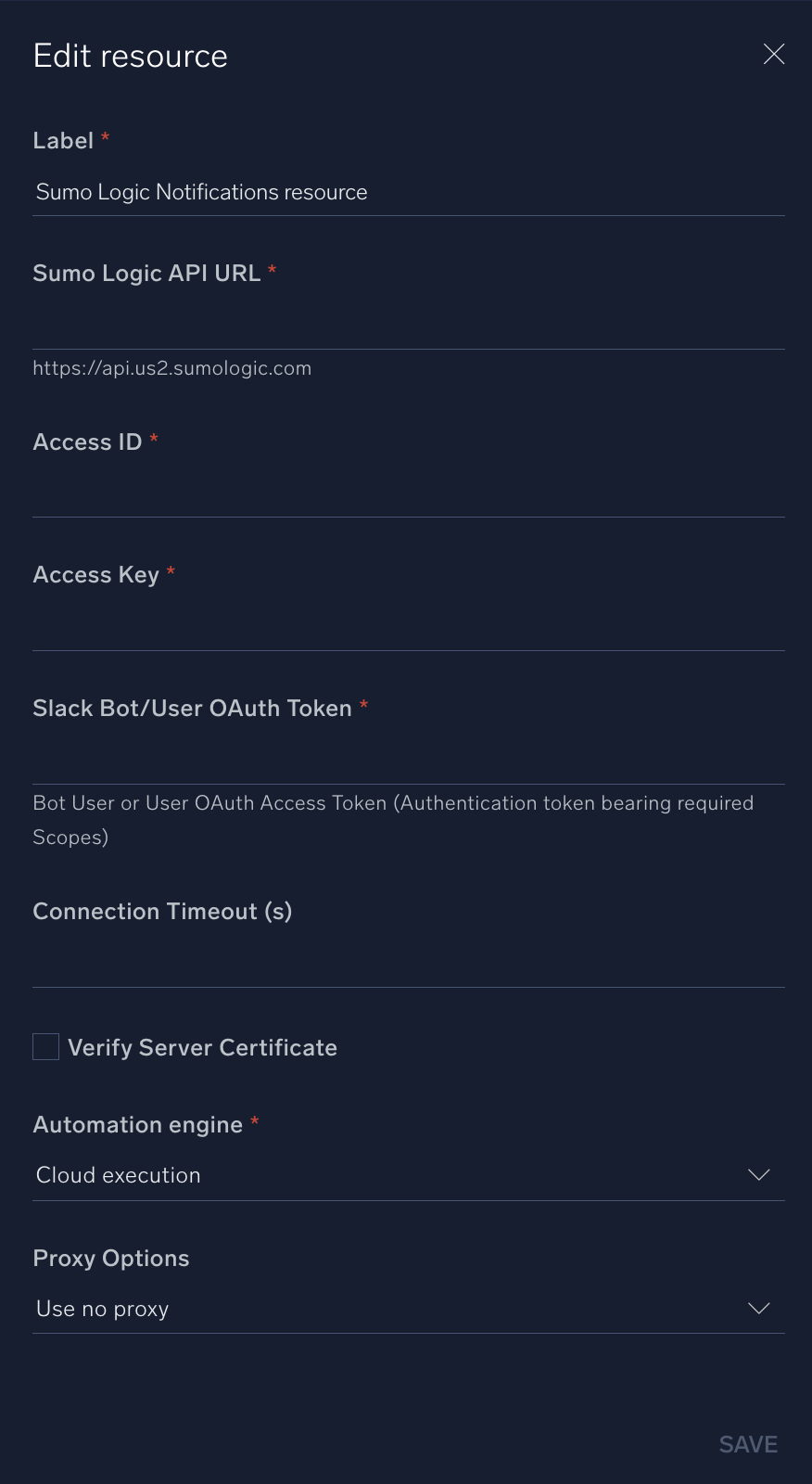Sumo Logic Notifications

Version: 1.2
Updated: Mar 4, 2024
Integration with Sumo Logic platform for monitors and Slack Notification.
Actions
- Assess Alert Status (Scheduled) - Periodically monitor status of a Sumo Logic alert and notify a Slack user about unresolved alert.
Sumo Logic Notifications configuration
Create a Sumo Logic access key
Create an access key and copy the resulting Access ID and Access Key. Store the ID and access key (temporally) into a text editor.
The ID and key won't be available again once you close the confirmation screen.
Create a Slack token
Configure a Bot or User OAuth token in Slack as described in Slack Configuration. You will provide the token when you configure the integration as described in the next section.
Add the following scopes to the token:
- For sending notifications (messages) to Slack:
chat:write. Required to send messages to a user or channel.chat:write.public(optional). Only needed if the bot needs to post to public channels where it’s not a member yet.
- For looking up a Slack user by email:
users:read.email. Required to find a user by their email address.users:read(optional). Add if general user profile information is also needed.
Configure Sumo Logic Notifications in Automation Service and Cloud SOAR
Before you can use this automation integration, you must configure its authentication settings so that the product you're integrating with can communicate with Sumo Logic. For general guidance, see Configure Authentication for Automation Integrations.
How to open the integration's configuration dialog
- Access App Central and install the integration. (You can configure at installation, or after installation with the following steps.)
- Go to the Integrations page.
Classic UI. In the main Sumo Logic menu, select Automation and then select Integrations in the left nav bar.
New UI. In the main Sumo Logic menu, select Automation > Integrations. You can also click the Go To... menu at the top of the screen and select Integrations. - Select the installed integration.
- Hover over the resource name and click the Edit button that appears.

In the configuration dialog, enter information from the product you're integrating with. When done, click TEST to test the configuration, and click SAVE to save the configuration:
-
Label. Enter the name you want to use for the resource.
-
Sumo Logic API URL. Enter the API endpoint URL for your region (for example,
https://api.sumologic.com). -
Access ID. Enter the access ID for your Sumo Logic access key. Select Default as the scope when generating access keys.
-
Access Key. Enter the access key corresponding to your Sumo Logic access ID.
-
Slack Bot/User OAuth Token. Enter the Slack token. See Create a Slack token above.
-
Connection Timeout (s). Set the maximum amount of time the integration will wait for a server's response before terminating the connection. Enter the connection timeout time in seconds (for example,
180). -
Verify Server Certificate. Select to validate the server’s SSL certificate.
-
Automation Engine. Select Cloud execution for this certified integration. Select a bridge option only for a custom integration. See Cloud or Bridge execution.
-
Proxy Options. Select whether to use a proxy. (Applies only if the automation engine uses a bridge instead of cloud execution.)
- Use no proxy. Communication runs on the bridge and does not use a proxy.
- Use default proxy. Use the default proxy for the bridge set up as described in Using a proxy.
- Use different proxy. Use your own proxy service. Provide the proxy URL and port number.

Change Log
- September 22, 2023 - First upload
- October 18, 2023 (v1.1) - Updated Assess Alert Status Action (Updated the Scheduled input to be dynamically set)
- March 4, 2024 (v1.2) - Updated code for compatibility with Python 3.12